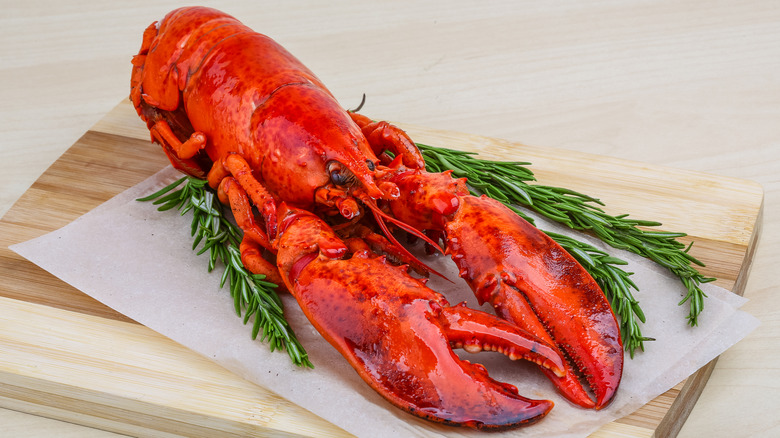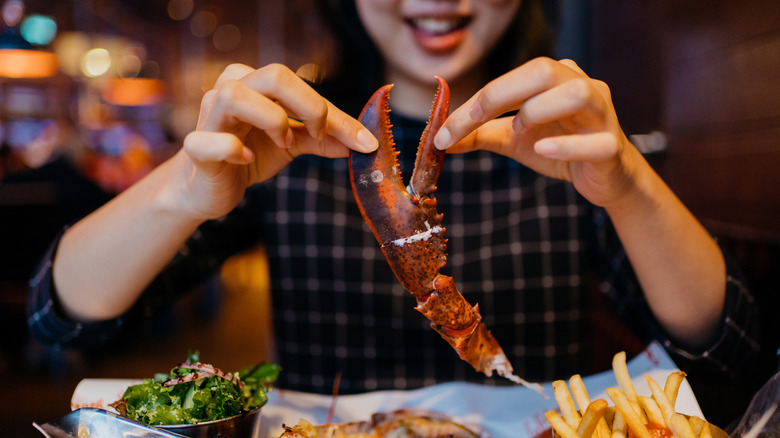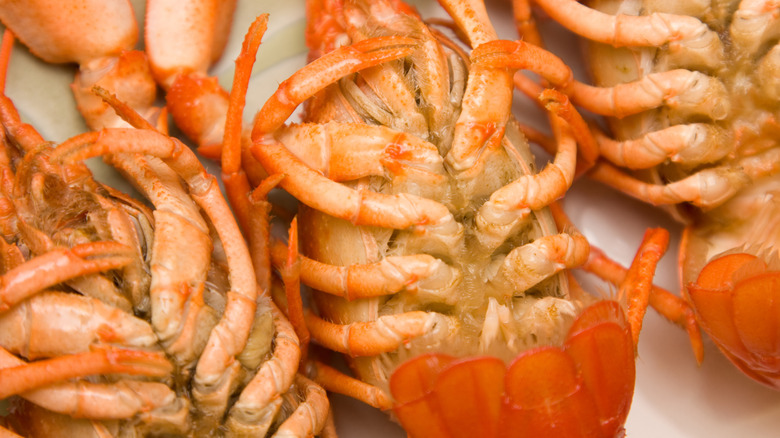How To Eat Lobster Like A Connoisseur
From its humble beginnings on the lowest rung of the cuisine ladder, lobster has become one of the most expensive proteins around (though you can buy it during certain times of the year to maybe get a deal on it). So, it makes sense that when you splurge on lobster you'll want to get your money's worth and extract every little bit of meat from the shell. Lobster can seem intimidating, but it's really not, and if you follow these expert tips, you'll be eating like a connoisseur in no time.
After you have thoroughly cooked your lobster, you'll want to break apart all the pieces — the tail, the legs, the claws, and you'll also be left with the main body. You can buy a lobster tool kit, which comes with scissors, crackers, and picks, or just use a sharp knife and a fork.
Curt Brown, lobsterman and marine biologist at Ready Seafood and board member for the Maine Lobster Marketing Collaborative has a handy tip for getting to the leg meat without a lobster kit: "To extract the meat, simply break the legs off the body, and roll any handy bottle or glass over the leg starting at the tip to push the meat out the open end."
How to get lobster meat out of the tail and claws
Now for the part that everyone loves: the tail. To access the tail meat, simply cut the shell with a knife or lobster scissors, slicing down the middle, length-wise. From there, you can open up the shell to expose the tender meat inside. (If you're really good, you can pull the tail meat out in one piece — perfect for dipping into butter.) If you happen to have a female lobster, you might also get a bonus: lobster roe. According to Curt Brown, lobster roe "turns bright red when cooked and can be enjoyed along with the meat, or incorporated into butter, bisque, or other food items to add a lobster flavor."
The claws are also a popular meat source, and they can be carefully cracked open — this is where lobster crackers come in very handy, as the claw shells can be rather thick. After removing the bottom, hinged part, you can break the claws with a heavy-duty knife or even a (cleaned and sanitized) hammer, if you don't have claw crackers on hand.
What parts should you avoid on a lobster?
While some opt to avoid the lobster body entirely, since it can be scarce and not worth the work it takes to extract it, others find the treasure hunt rewarding. According to Curt Brown, if you do eat this part, "you'll want to avoid the tomalley (green substance) found in the body of the lobster, as this substance acts as the liver [...] and can contain toxins."
Per the Maine government website (and they should know), diners should forego eating tomalley altogether due to the toxin risk. While some people choose to ignore these warnings, considering tomalley a delicacy, children and those who are pregnant should take special care to avoid eating this substance. Another part no one should eat, says Brown, is "the black vein that runs the length of the tail meat." This is the lobster's digestive tract, much like the black vein that runs down the back of a shrimp.


